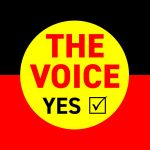We white folk don’t have to hide behind a mask like a youth, tough yet isolated, swaggering down Redfern in a two-dimensional dusk just killing time, to hide our true feelings. The general pressure and insecurity of being different is foreign to us.
Racism, which is still so very visible in our nation and in our culture, has been largely received from others starting with adults who in turn pass it down. It has been forcefully denied and its existence absent from discourse in public, but that denial illustrates that First Nation people are having to deal with authority figures who do not recognise their own racist behaviour, and consequently, not even understanding their responsibility.
Overall, it is our collective understanding of how to address racism that is woefully inadequate. It is even counterproductive. First Nation people don’t want to be perceived as victims or have their identity, by the experience they have had of racism, forced upon them. Unfortunately, it is easy to do this.
The social media is largely to blame for this by using emotive content that in turn can make one very wary of the other’s motives. Pity and outrage do not serve a constructive purpose.
When we examine the distinction between overt and covert racism it becomes clearer to comprehend how racism functions in our everyday life.
Overt racism is easily detectable for it is manifest in the use that can be made of racial prejudice and discrimination as forms of power. It is based on patterns, data, and history. It is covert racism which can be harder to tease out and so many in our country claim that they are not racist when within
themselves it is brimming over. It is subtle and unspoken and more difficult to grapple with than racism that is overt.
In a sense we are not talking about hate crimes, hate speech, systemic or institutional racism, racial profiling, police brutality or negative racial stereotypes. They are still present, but they are easily detectable. Overt racism readily shows its face.
It is covert racism that is racism that at first is not so easily evident or obvious. It can be difficult to discern. The victim of this racism often feels uneasy, excluded, marginalised, and exploited. That sense of rejection without knowing just why.
This is made manifest in legal rights discrimination, implicit healthcare discrimination, implicit housing discrimination and even networking and opportunity discrimination. The list can go on and on.
Covert racism, which I believe we are all a part of, has crept at times into our culture, our preferences, our perceptions and ultimately into our actions. I sense that all of us, not only the Anglo-Saxon but all people have some bone of racism in their body. Once we are aware of it, it is only then can we act to lessen it and hopefully in time to eradicate it. But it does take a lot of work and much effort.
So, now as referendum day approaches, we must start to see and believe in a mantra containing one syllable “Yes.” This will make us a kinder and a more tolerant society where we can look back on the mistakes we have made in the past and do something about them. We can start by acknowledging that we all have traces of racism. In this way we can start dismantling our past notions about race.
We will resolve not to remain neutral or just stand still. We will want to take genuine pride in who we are as Australians and from diversity of our cultures.
John
20th September 2023




